
Cloudian Storage for Kubernetes
Cloud-Native Storage for Your Data Center
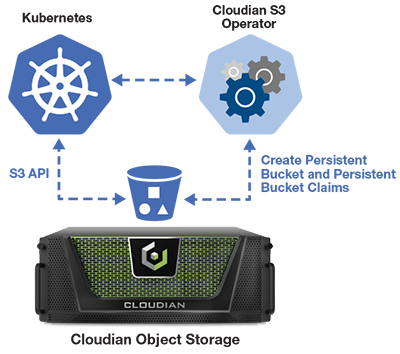
Cloud-Native Storage for Your Data Center
Containerized applications require storage that’s agile and scalable. The Cloudian Kubernetes S3 Operator (available now on GitHub) provides an easy way to access exabyte-scalable Cloudian storage from your Kubernetes-based applications, whether managed via VMware vSAN or SUSE Rancher. Built on the S3 API, Cloudian lets you dynamically or statically provision object storage with this lightweight Operator using S3 APIs. You get cloud-like storage access in your own data center.
Defense Strategies Have Holes
Cloudian is cloud-native S3-compatible storage. It runs in your data center and uses the S3 API plus other cloud-technology elements to provide cloud-like data access. From the application point of view, it is cloud storage.
Cloudian now makes it easy to use private cloud storage with your Kubernetes applications. Cloudian’s Kubernetes S3 Operator is a lightweight Operator using S3 APIs that allows applications to dynamically or statically provision object storage. The result is self-service storage access in a cloud-like infrastructure.
Here are seven reasons why Cloudian is the ideal storage environment for your Kubernetes applications:
S3 API for Application Portability
Designed from the ground up as a native-S3 API platform, Cloudian offers the industry’s most complete S3 API compatibility. This eliminates lock-in and enhances application portability, so you can write code once then deploy it where it’s needed. Plus, you get fast, self-serve storage access using the standard Kubernetes Persistent Volume (PV) and Persistent Volume Claim (PVC) methodology to provision assets. This is storage for Kubernetes that’s agile and standards-based.
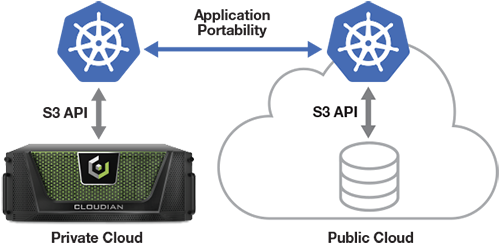
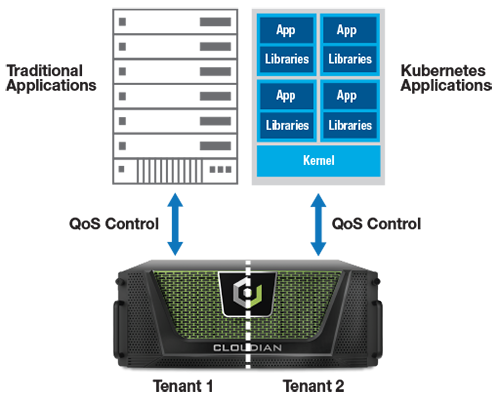
Multi-tenancy for Shared Storage
Share your private cloud among multiple use cases and operating environments. Cloudian’s secure multi-tenancy lets you create separate namespaces and self-serve management environments for development and production users. Each tenant’s environment is isolated, with data invisible to other tenants. Performance can be managed, too, with integrated quality of services (QoS) controls.
Hybrid Cloud-Enabled
Bring your on-prem and cloud worlds together. Cloudian’s integrated public cloud data management tools make it easy to replicate or migrate data to AWS, GCP, or Azure. Data stored to the cloud is always stored in that cloud’s native format, meaning that it’s directly accessible to cloud-based applications. There’s no lock-in. Manage data among clouds, too, making data accessible wherever it is needed, without the complexity of a separate management layer.

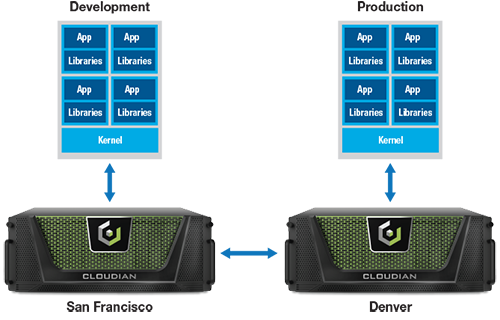
Span the Globe with Geo-Distribution
To keep performance up and latency down, applications require access to local storage. If you need to manage that storage and data across multiple sites, you know this can be a challenge. Cloudian solves this problem with a distributed architecture that lets you put data anywhere you need it. From a single screen, manage the integrated replication and striping tools to put data near the applications.
S3-Compatible Storage for VMware Cloud Foundation
Cloudian brings enterprise-grade S3-compatible object storage to VMware Cloud Foundation, allowing customers to deploy Cloudian HyperStore on VMware vSphere cluster and leverage underlying vSAN disks for storage of object data. The integrated solution will allow IT operators to modernize their storage infrastructure to meet the requirements of any application on a unified storage platform, at scale, on-prem, and in the cloud, delivering better performance and availability at lower TCO.
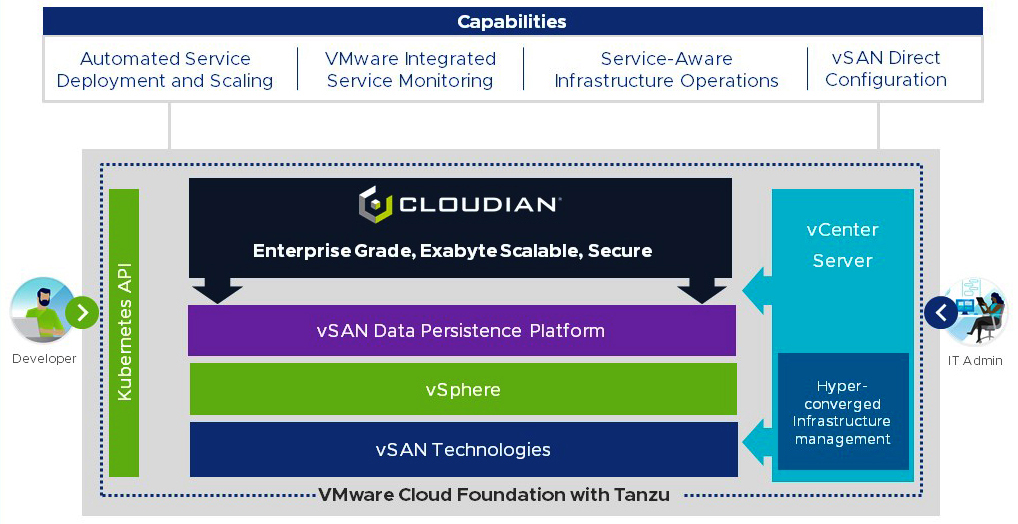
Cloudian integrates with VMware vSAN Persistent Services platform, enabling new efficiencies and savings by allowing enterprises to run both modern, cloud-native and traditional applications in a single, S3-compatible shared storage environment, at any scale, on-prem and in both private and public clouds.
Download the Seven Reasons Why Cloudian for Kubernetes Solution Brief (.PDF)
Download the Cloudian VMware SAN Solution Brief (.PDF)
